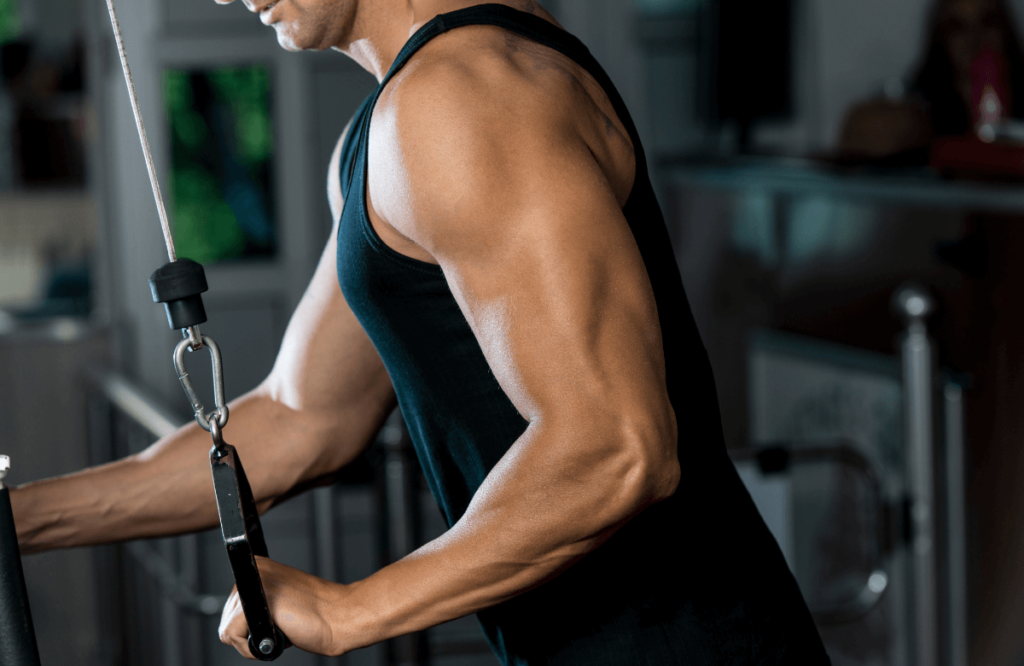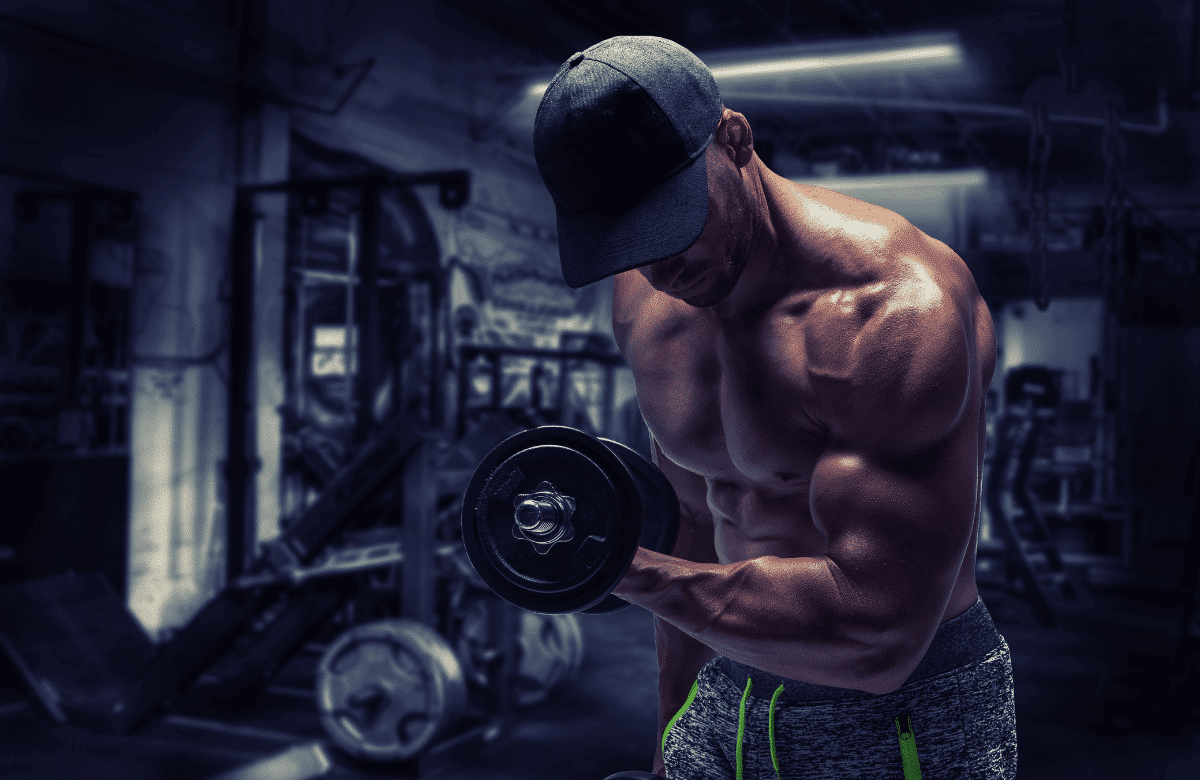In the pursuit of a strong and well-defined physique, few achievements are as satisfying as chiseled biceps and triceps. These twin powerhouses not only symbolize upper body strength but also serve as a testament to your dedication and hard work in the gym. Whether you’re a seasoned fitness aficionado striving for greater gains or a newcomer embarking on your fitness journey, the road to impressive arms begins with a strategic and balanced approach. Use this article as your guide to bicep and tricep workouts proven to give results.
Jump to:
Hitting Your Arms From All Angles, Why?
Why, you may wonder, is it essential to hit your arms from all angles? The answer lies in the complexity of the arm muscles themselves and the importance of achieving both aesthetic appeal and functional strength.
Comprehensive Muscle Development
The arms consist of a network of muscles that work in harmony to execute a wide range of movements. The biceps, situated on the front of the upper arm, are responsible for flexion at the elbow and supination of the forearm. On the other side, the triceps–a larger muscle group on the back of the upper arm–play a crucial role in elbow extension. To ensure proportional development and overall arm symmetry, it’s vital to target these muscles comprehensively.
Avoiding Imbalances
Focusing solely on one aspect of arm training, such as bicep curls, while neglecting other movements can lead to muscle imbalances. These imbalances not only hinder aesthetics but can also increase the risk of injury. Neglected muscle groups can become weaker and less stable, affecting overall joint function. By hitting your arms from all angles, you prevent imbalances and promote overall joint health.
Functional Strength
While aesthetics are undoubtedly a significant motivation for arm training, functional strength should not be overlooked. Our arms play an integral role in everyday activities, from lifting groceries to performing sports-related motions. Training your arms from different angles helps develop the muscles in ways that mirror real-life movements, enhancing your overall functional strength and making daily tasks easier and more efficient.
Maximizing Muscle Activation
Each angle of movement places a unique emphasis on different parts of the muscle groups. By varying your exercises, you activate different muscle fibers, promoting balanced growth and greater muscle development. Hitting your arms from multiple angles ensures that you’re not missing out on any potential gains.
Preventing Plateaus
Our bodies are adaptive machines. If you perform the same exercises repeatedly, your muscles can adapt and stop responding to the stimuli, leading to plateaus in progress. By introducing a variety of exercises that target your arms from different angles, you keep your muscles guessing and continue to make gains.

Exercises for Biceps
- Concentration Curl: This classic isolation exercise focuses on the biceps by minimizing the use of momentum. Sit on a bench, rest your elbow against your inner thigh, and curl a dumbbell upwards.
- Cable Curl: Using a cable machine provides continuous tension on the biceps throughout the movement, contributing to muscle growth and definition.
- Barbell Curl: The barbell curl is a staple in arm training, effectively engaging the biceps while allowing for progressive overload.
- Chinup: A compound movement that engages both the biceps and back muscles, chin-ups are excellent for building overall upper body strength.
- Incline Bicep Curl: This variation targets the long head of the biceps, adding more depth to your arm development.
- Twisting Dumbbell Curl: By rotating your wrists during the curl, you engage different fibers of the biceps, leading to a more complete workout.
- Underhand Seated Row: While primarily a back exercise, the underhand grip also activates the biceps, providing a unique way to target both muscle groups.
- Reverse Curl Straight Bar: Targeting the brachialis and forearms, reverse curls enhance the overall aesthetics of the arms.
- Leant-Forward EZ Bar Curl: Leaning forward isolates the biceps, leading to greater muscle activation and growth.
- Reverse-Grip EZ Bar Curl: A variation of the classic curl, the reverse grip places a different emphasis on the biceps.
- Prone Dumbbell Spider Curl: Performed lying face down on an incline bench, this exercise isolates the biceps, maximizing the range of motion.
- Incline Hammer Curl: Hammer curls work both the biceps and brachialis, adding width and definition to the arms.
- Hammer Strength Machine Curl: This machine variation provides a controlled and effective way to target the biceps while minimizing the risk of cheating or using momentum.

Exercises for Triceps
- Triangle Pushup: A bodyweight exercise that targets the triceps, triangle pushups engage the muscles in a unique way due to hand positioning.
- Tricep Kickback: Using dumbbells, the tricep kickback isolates the triceps for maximum muscle activation.
- Dips: Dips are a compound movement that engages the triceps, chest, and shoulders. Variations like bench dips or parallel bar dips offer targeted stimulation.
- Overhead Extension: This exercise stretches and contracts the triceps, promoting muscle growth and flexibility.
- Javelin Press: The javelin press is a combination of a shoulder press and a tricep extension, providing a comprehensive upper body workout.
- One Arm Tricep Extension (Seated): Performing tricep extensions with one arm at a time ensures balanced muscle development.
- Decline Close-Grip EZ Bar Skullcrusher: The decline angle increases the tension on the triceps, and the close grip emphasizes the inner portion of the muscle.
- Tate Press: Also known as the “elbows out” tricep extension, the Tate press targets the lateral head of the triceps.
- Standing Overhead Barbell Triceps Extension: Using a barbell overhead engages the triceps and stabilizing muscles, creating a well-rounded workout.
- Close-Grip Bench Press: By narrowing your grip on the bench press, you focus on the triceps while still engaging the chest.
- Tricep Dips (Advanced): Advanced dip variations, such as ring dips or weighted dips, challenge the triceps even further.
- Rope Pulldowns: Rope pulldowns isolate the triceps and provide an intense contraction at the bottom of the movement.
- Tricep Kickbacks: A versatile exercise that can be performed with various equipment, tricep kickbacks emphasize the rear portion of the triceps.

How many sets and reps should you do during bicep and tricep workouts?
The number of sets and reps you should perform when training your arms (biceps and triceps) depends on your specific fitness goals, usual intensity level, and the phase of your training program. Here are some general guidelines to consider:
Hypertrophy (Muscle Growth)
If your primary goal is to build muscle size and definition, a common rep range for hypertrophy is around 8-12 reps per set. Aim for 3-4 sets per exercise. This rep range is effective for creating metabolic stress in the muscles and promoting muscle growth. Choose a weight that challenges you within this rep range, and as you get stronger, gradually increase the weight while maintaining good form.
Strength
For those focusing on building strength, you can work with lower rep ranges and heavier weights. Aim for 4-6 reps per set and perform 4-5 sets per exercise. This rep range helps you build neuromuscular strength and develop your ability to lift heavier weights.
Endurance
If your goal is to improve muscular endurance and stamina, you can opt for higher rep ranges. Aim for 12-15 reps per set and perform 3-4 sets per exercise. This will challenge your muscles to sustain activity for longer periods, leading to improved endurance.
Variation and Periodization
It’s essential to incorporate variation and periodization into your training routine. Periodization involves cycling through different rep ranges and intensities over time. This approach helps prevent plateaus and keeps your muscles challenged. For example, you could focus on strength training for a few weeks, then transition to a hypertrophy phase, followed by an endurance-focused phase.
Rest Between Sets
Rest periods between sets also play a role in your training. For hypertrophy, rest for around 60-90 seconds between sets to maintain the intensity. For strength training, you might need slightly longer rests of 2-3 minutes to recover fully between heavy sets.
Remember, individual responses to training can vary, so it’s essential to listen to your body and adjust based on how you feel and the progress you’re making. Additionally, always prioritize proper form and technique to avoid injuries and maximize the effectiveness of your workouts.
As a general starting point, here’s a summary:
- Hypertrophy: 3-4 sets of 8-12 reps
- Strength: 4-5 sets of 4-6 reps
- Endurance: 3-4 sets of 12-15 reps















